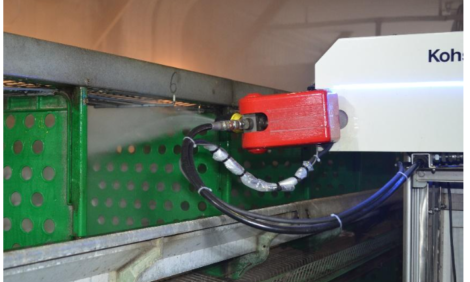



E. cecorum recovered from commercial poultry
E. cecorum is a bacterium that causes disease and lameness in broilersEnterococcus cecorum (EC) is a Gram-positive bacterium that recently has been identified as an important cause of systemic disease and lameness in broilers. Research data related to the differentiation between pathogenic and commensal EC obtained from field outbreaks is limited.
Phenotypic and genotypic characteristics of EC, including the lack of the ability to metabolize mannitol and the presence of the cpsO gene, have been associated with pathogenicity.
Using a convenience sampling method, 299 cases received at Mississippi State University’s Poultry Research and Diagnostic Laboratory from January to October 2023 were analyzed, said graduate student Marcela Arango, Mississippi State University, during the 2024 International Poultry Scientific Forum.
The goals of a study by Arango and fellow students were: 1) to analyze the distribution of Enterococcus spp. cases and 2) to assess the pathogenicity by the determination of mannitol metabolism and the detection of the cpsO gene in selected EC isolates (n=75).
Samples from birds were plated onto Columbia (CNA) agar. Samples from the hatchery were inoculated in enrichment broth and plated onto CNA plates. All plates and broths were incubated at 37°C overnight (CO2 - enriched atmosphere), she said.
On selected EC isolates, mannitol metabolism was evaluated using a Gram-positive plate identification. Conventional PCR was performed by targeting the cpsO gene. The distribution of Enterococcus spp. cases analyzed was as follows: broilers (n=127), breeder pullets (n=85), hatchery (n=50), broiler breeders (n=29), commercial layers (n=3), and others (n=5).
Arango explained that Enterococcus cecorum represented 62% of Enterococcus spp. isolates from broilers (mainly from heart and femoral head samples), and 90% from broiler breeders, (mainly from intestines).
- 82% of the isolates were PCR-positive for the cpsO gene
- 100% of the breeder isolates recovered from the intestine were cpsO negative, suggesting a commensal status
- 96% of pathogenic isolates were unable to metabolize mannitol
These results indicate a high prevalence of pathogenic EC in broilers, and the presence of commensal EC in breeders. Additionally, the results support previous research indicating that the mannitol metabolism may be an additional reliable tool to assess EC pathogenicity, Arango concluded.










